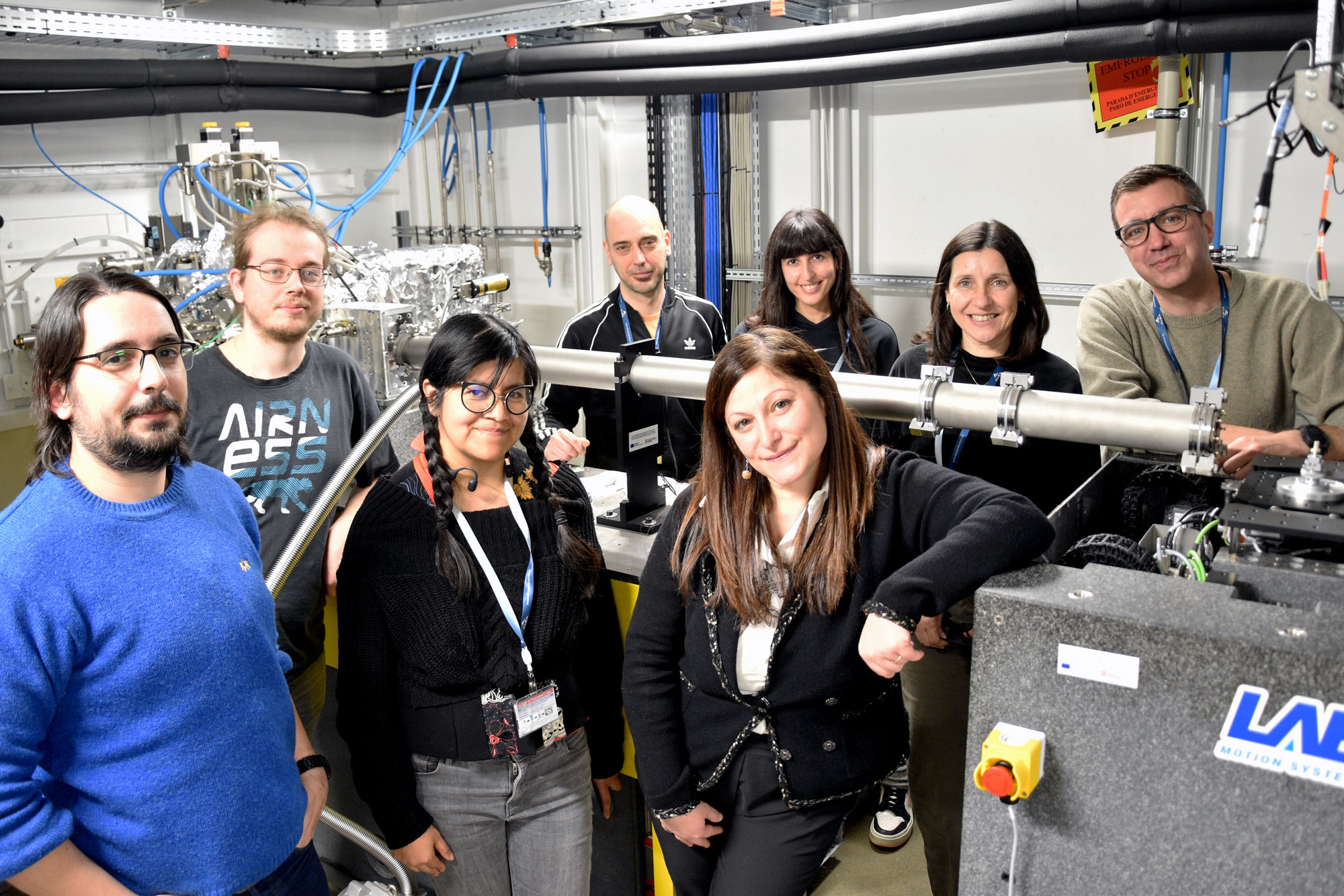ALBA Synchrotron

The new beamline of the ALBA Synchrotron, devoted to fast X-ray tomography and radiography, is in full swing. It has recently welcomed the first official users with an experiment on the durability of green cements. They are scientists from the Universitat Politècnica de Catalunya and the Universitat de Barcelona investigating on new methods to find more sustainable cements.
Building a new beamline is a highly complex project that covers several critical phases, from the design to the construction, to the team recruitment and the commissioning, until you achieve a high-performance analytical instrument, ready for the scientific community. This is the result of a period that can go from 3 to 5 years approximately, including countless hours of dedication from the scientific and technical teams involved. Therefore, hosting the first official experiment is a milestone that deserves huge celebration.
FaXToR is a versatile beamline to perform quasi-real-time 3D computed tomography, being key to study the dynamics of certain processes at the micrometric scale using X-rays. It serves a wide range of scientific fields, including materials science, biology, paleontology, earth sciences, cultural heritage and industrial applications.
After its successful commissioning and the friendly users' experiments, now FaXToR is in operation having welcomed the first official users recently. Researchers from the department of Architecture and Civil Engineering from the Universitat Politènica de Barcelona and from the department of Mineralogy, Petrology and Applied Geology from the Universitat de Barcelona have studied the properties and performance of different novel low-carbon cements at the new ALBA beamline.
The new products can result in more environmentally friendly constructions, helping to reduce the carbon footprint of the global building industry. The cement industry is responsible for approximately 5% of global carbon dioxide output and concrete is the second most consumed substance on Earth, surpassed only by water.
The group analysed 112 samples in 4-days beamtime with a resolution approx. of 3um obtaining about 20TB of datasets between raw data and processed (with reconstruction performed in both absorption and phase retrieval, plus applying the tomographic stitching protocol to reconstruct a mosaic 3D picture of cm-sized samples at micron-scale resolution). These remarkable results demonstrate the wide experience of the team who built the beamline and prove its high productivity capacity since the very beginning. Now it’s time for the researchers to analyse these data and progress on their work before publishing the results.
Alessandra Patera, group leader at the beamline, highlights that "achieving this new milestone is of great importance for all the team and pushes us to keep at the forefront of science and technology to obtain the best results for our users".
FaXToR beamline was co-funded by the European Regional Development Fund of the European Union.